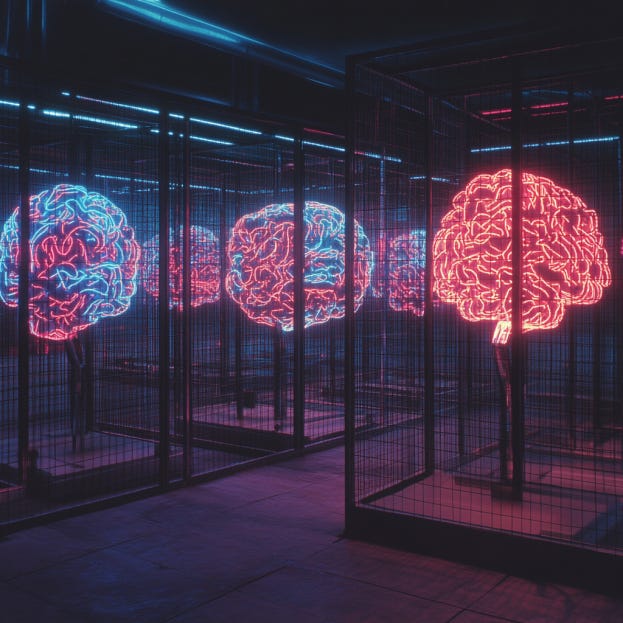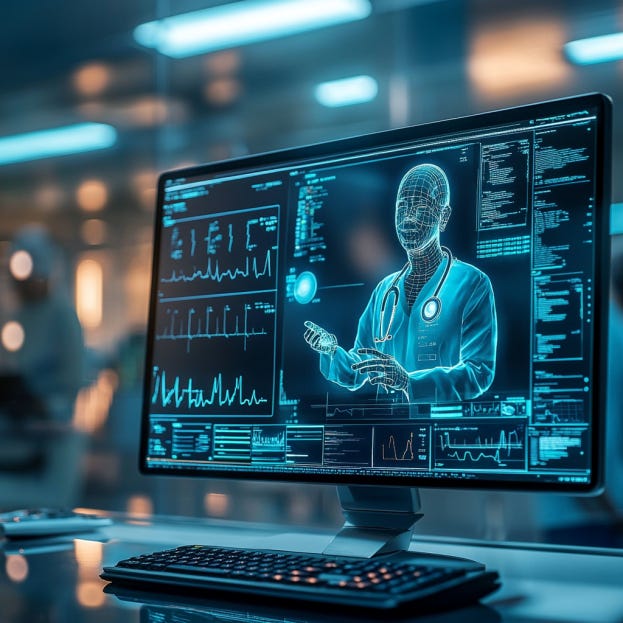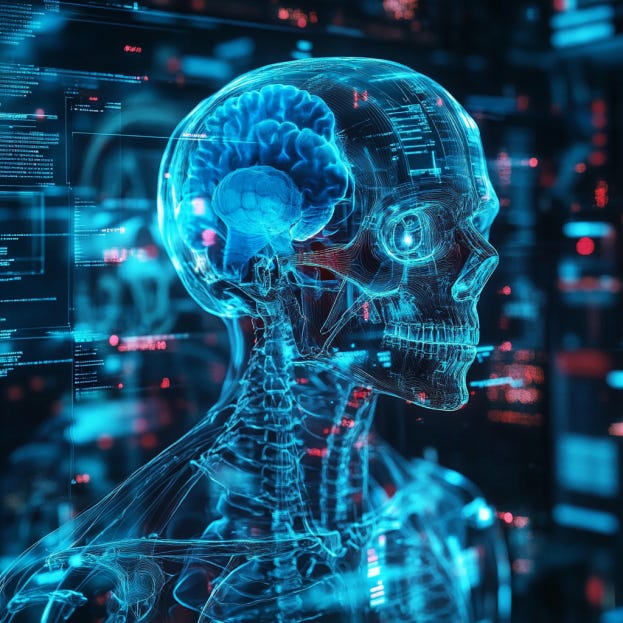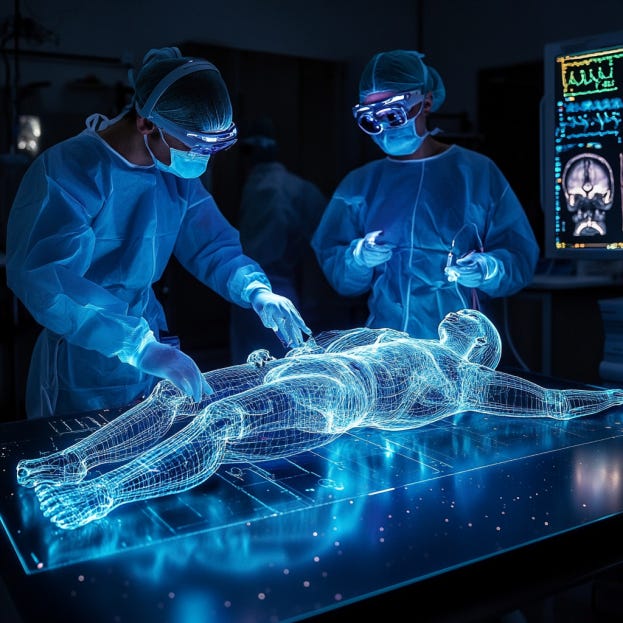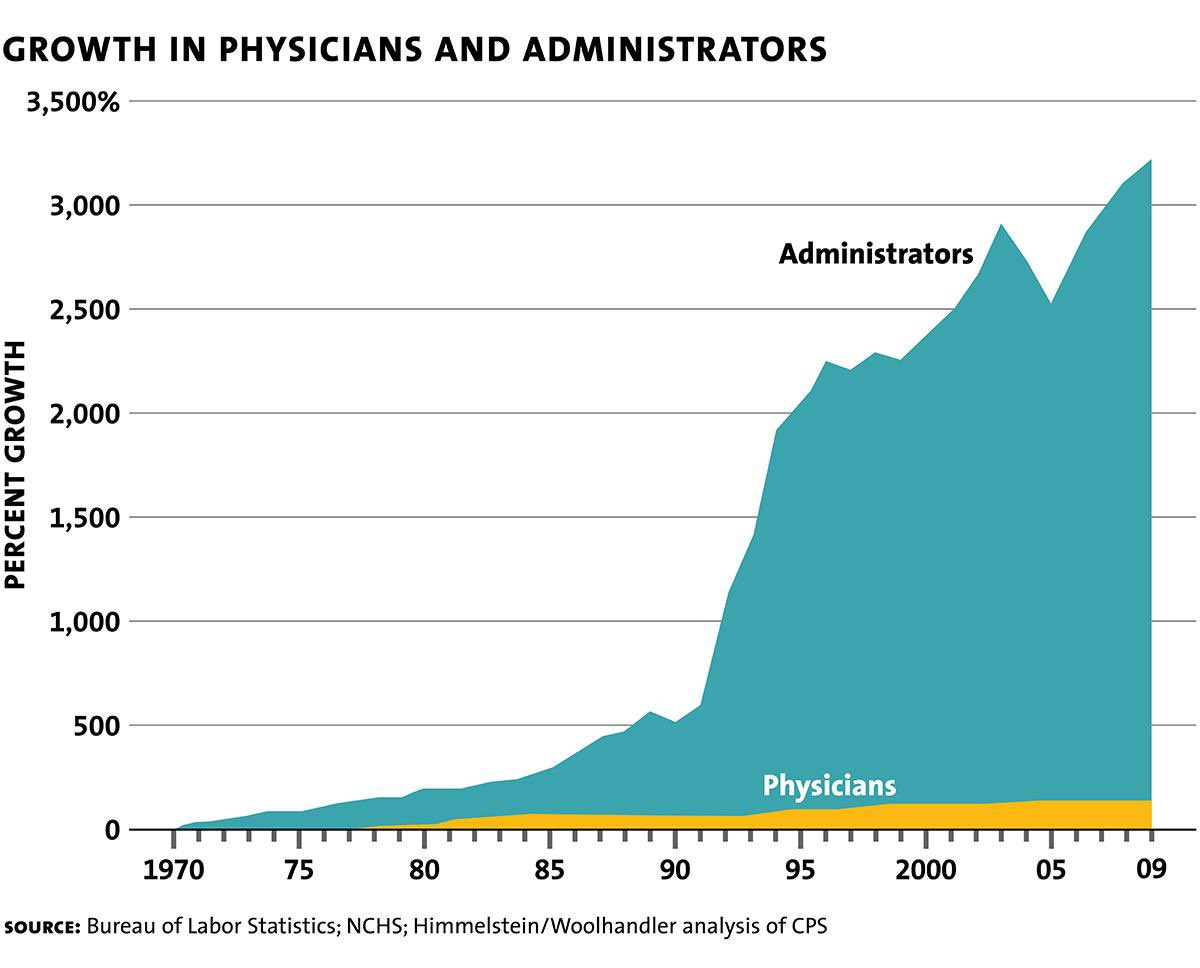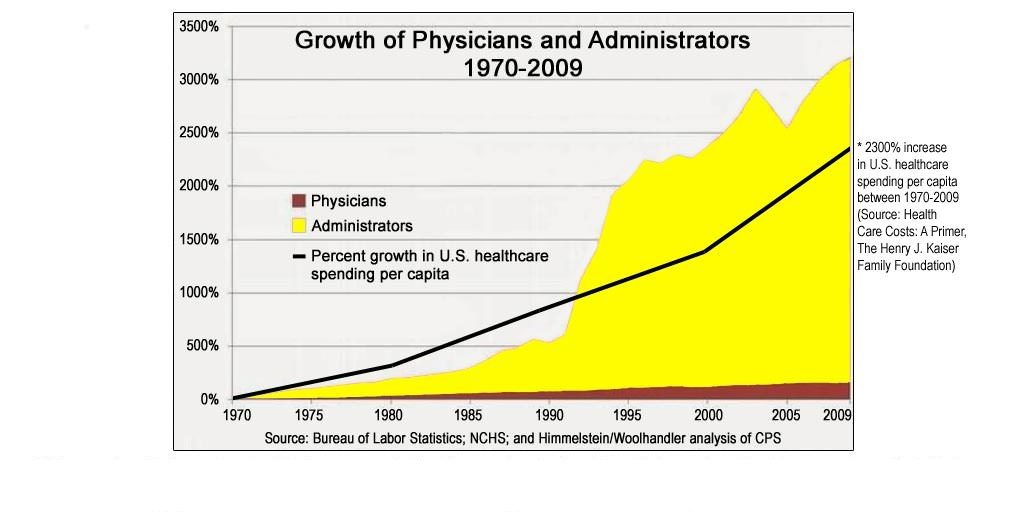A speculation on the deep medicine of tomorrow
Some musings on the future of medtech.
Welcome to the Deep Medicine Digest! My name is Dr. Robert Toth and I run Theta Tech AI, a healthcare AI consulting firm. Click here to contact us about our professional consulting and AI services.
Has someone forwarded this article to you? Click here to subscribe to this newsletter for free and get AI content sent directly to your inbox:
Overview
In this article, I will try to extrapolate the future of medical technology based on some trends I’m noticing. The future is always uncertain, though, and the world of AI moves fast. Thus, expect everything I write here to be wildly out of date in short order. Regardless, do your own homework and may you enjoy some of my educated guesses as to tomorrow’s deep medicine:
Foundational Models
Firstly, there will be a massive proliferation of “foundational models”. Large institutions or companies will incur the compute cost to train models on enormous healthcare datasets, and either release them or offer API access so others can use those models downstream. You can just chop of the last layer of the neural network and use the embeddings, thus benefiting from the expensive large-scale training. (If what I said just now sounds like gibberish to you… well then you have some homework to do!)
Foundational models are already rising. Within picoseconds of Meta’s SAM model being released, multiple fine-tuned versions for medical images arose. Microsoft just released a foundational model trained on both radiology data and surgical videos. And pathology foundational models have been around for ages (months). And that’s just the tip of the iceberg.
LoRA, fine-tuning, and direct use of these foundational models will start to dominate the medical imaging AI landscape. Joint LLM-ViT multi-modal models specialized for healthcare will integrate language AI with computer vision, while some non-medical datasets may find their way into the training data.
It will simply be more efficient, cost-effective, and wiser for smaller teams to build atop foundational models. Hopefully, competition encourages open-source alternatives to pop up and compete so we don’t end up in a monopolistic scenario, but time shall tell.
Keep your ear to the grindstone, and get familiar with the landscape of foundational models.
Model Zoos
From HuggingFace’s massive amount of medical AI models, to Nvidia’s Project Monai, ecosystems of the best pre-trained AI models for various healthcare tasks are becoming more solidified and rigidly evaluated. While some models will be tailed to a specific disease or body part, general-purpose models with perhaps minor tweaking for specific indications. There will begin to be regularly used benchmark datasets for validation, and perhaps an ELO-based scoreboard for medical AI models will emerge, akin to lmsys’s arena. Researchers will have known places to look for the best medical AI models, and model zoos will become more formalized over time.
Bifurcation of Language Models
The domain of healthcare LLM’s is starting to see some models specializing in:
Doctor-patient communication;
Summarizing doctor notes;
Letting patients chat with an AI-doc;
Automatic generation of reports;
Chatbots for doctors and nurses to chat with patient records;
Boring admin tasks like automatically catching and fixing errors in insurance claims.
Now that the basic rules of building large language models have begun to congeal, highly specialized models, while still being general purpose enough to handle unexpected situations, will start to seep into the world of healthcare, filling in the cracks with administrative work.
Hospitals may start to compete on insurance claim rejection rates; the first hospital showing a significant reduction in insurance claim denials using AI software will encourage others to follow suit. Radiology departments will have (require?) automatic AI-generated reports for all their MRI scans. Doctors’ recordings will be transcribed, parsed, summarized, compared, analyzed, and shared. Malpractice claims will drastically change as some doctors sadly don’t check these LLM-generated notes and blindly trust them, while healthcare litigation language models may provide legal assistance.
Each use case will be a LoRA or fine-tuned versions of the same few foundational model, but specialized to their use case. And each will have uniquely associated benchmarks, legal / regulatory risks.
“The future should look like the future!”
The creep of other high-tech industries into healthcare (video games, graphic design, user experience, social media, podcasts), will put pressure on healthcare software to move away from old, outdated user experiences. Voice mode will be prevalent (nurses having verbal conversations with AI), and AI-generated imagery from charts to graphics to diagrams will enrich the way doctors engage with their records. Radiology software will start to look futuristic, while AI summaries will allow doctors to chat with their patient records instead of reading them off outdated GUI’s that would feel at home in the 1980’s.
Virtual reality (VR) will help doctors step into your body, and augmented reality (AR) will allow doctors to see overlays of relevant information and salient patient history when looking at something like your blood work. And holograms cannot come soon enough. Healthcare interfaces will start to look cool! Imagine a doctor using medical software that looks like a video game or something from Star Trek.
The future should look like the future, and it will!
What else?
Well, the administrative bloat will be eased away by AI. I am sorry for all the admin positions that are going to get eroded, but many of these jobs exist from pure bureaucratic bloat, and that’s just too bad. This unburdening will allow healthcare providers to focus on healing patients.
Because of AI, call schedules and nursing staffing will be optimized, and dangerous fatigue will be detected earlier (a major issue with increasingly overworked doctors). In addition, remote medicine - from teleradiology to remote surgery - will continue to grow, and surgical equipment will start to get significantly automated. AI-generated designer drugs for cancer and other disease will start to promulgate, and 3D-printed organs are always on the horizon.
I suspect that venture capital money will pour more into companies addressing boring administrative bloat rather than sexy new technology, but a rising tide raises all ships, and AI will enable a new world of medicine.
Behold! The future of medicine is here!
Thank you for reading this article from The Deep Medicine Digest by Robert Toth, Ph.D.! Please forward this email to your friends and colleagues that may enjoy the content, or click the share button below!





